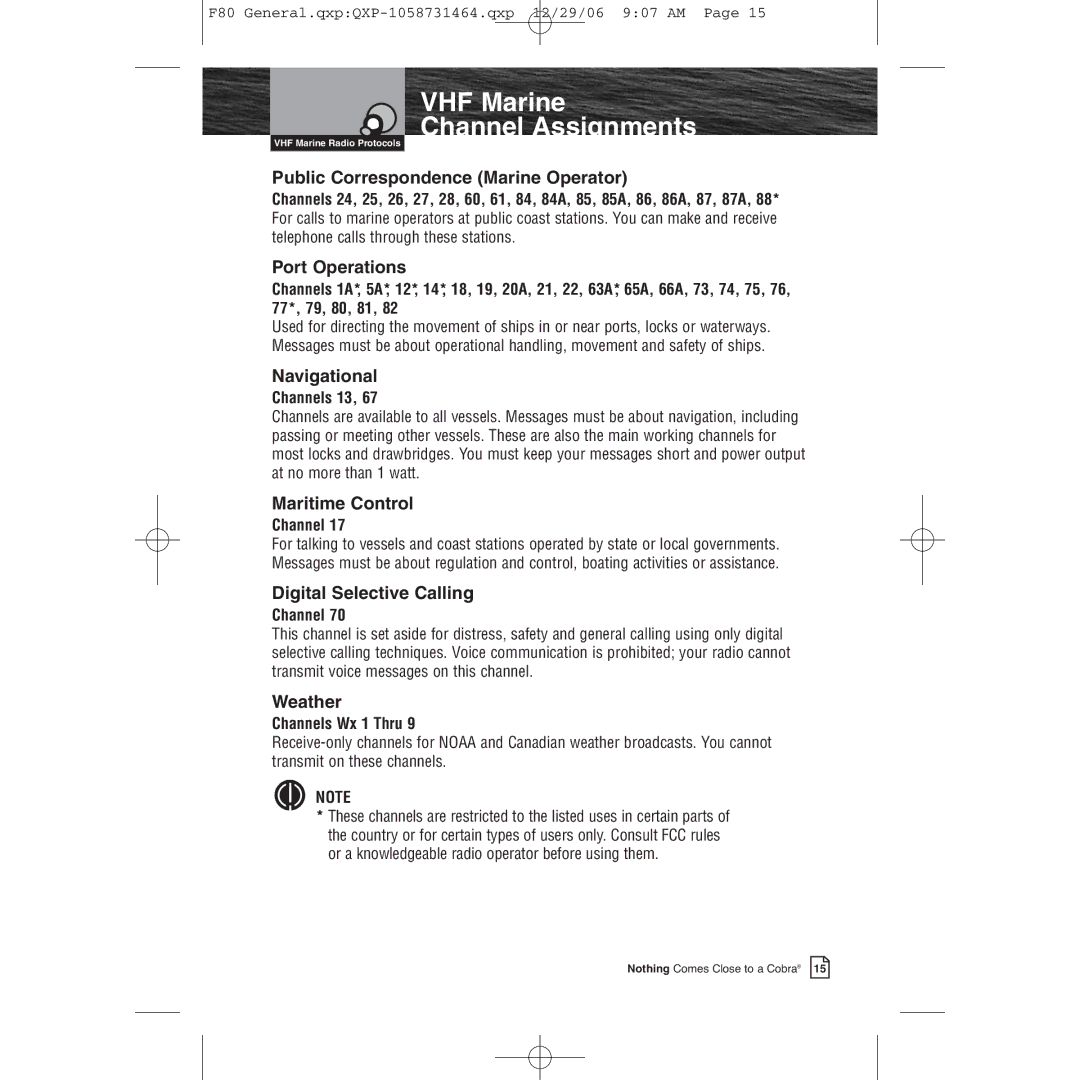
F80
VHF Marine Radio Protocols
VHF Marine
Channel Assignments
Public Correspondence (Marine Operator)
Channels 24, 25, 26, 27, 28, 60, 61, 84, 84A, 85, 85A, 86, 86A, 87, 87A, 88* For calls to marine operators at public coast stations. You can make and receive telephone calls through these stations.
Port Operations
Channels 1A*, 5A*, 12*, 14*, 18, 19, 20A, 21, 22, 63A*, 65A, 66A, 73, 74, 75, 76, 77*, 79, 80, 81, 82
Used for directing the movement of ships in or near ports, locks or waterways. Messages must be about operational handling, movement and safety of ships.
Navigational
Channels 13, 67
Channels are available to all vessels. Messages must be about navigation, including passing or meeting other vessels. These are also the main working channels for most locks and drawbridges. You must keep your messages short and power output at no more than 1 watt.
Maritime Control
Channel 17
For talking to vessels and coast stations operated by state or local governments. Messages must be about regulation and control, boating activities or assistance.
Digital Selective Calling
Channel 70
This channel is set aside for distress, safety and general calling using only digital selective calling techniques. Voice communication is prohibited; your radio cannot transmit voice messages on this channel.
Weather
Channels Wx 1 Thru 9
NOTE
*These channels are restricted to the listed uses in certain parts of the country or for certain types of users only. Consult FCC rules or a knowledgeable radio operator before using them.
Nothing Comes Close to a Cobra® 15
